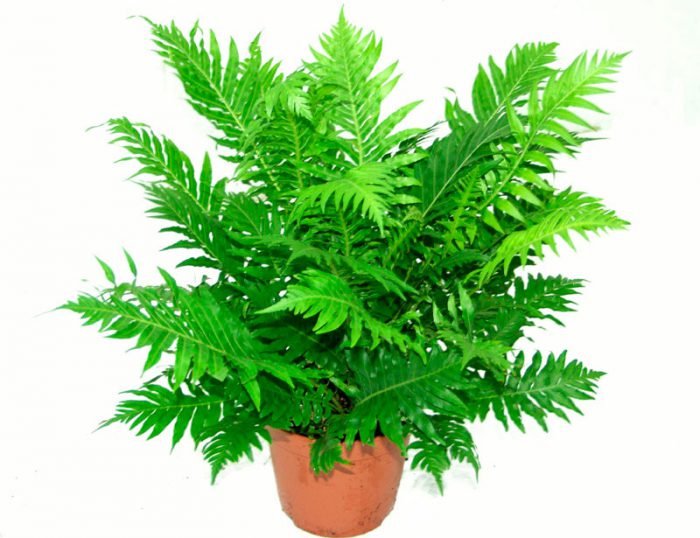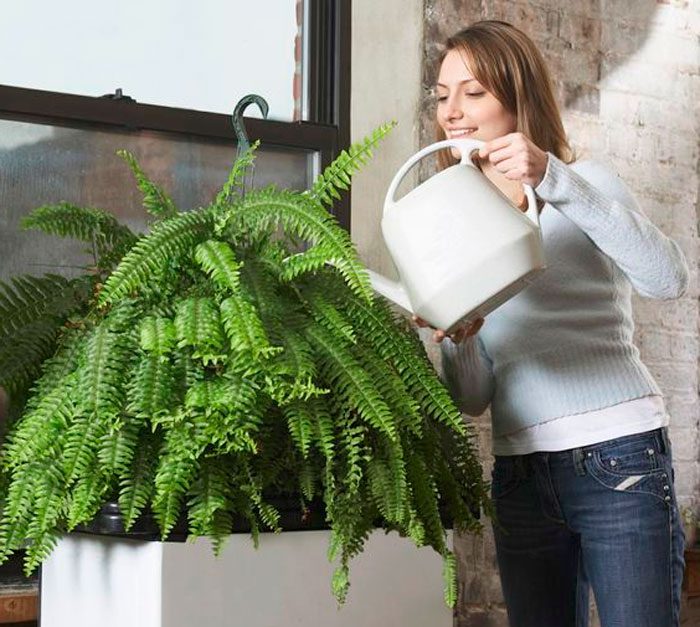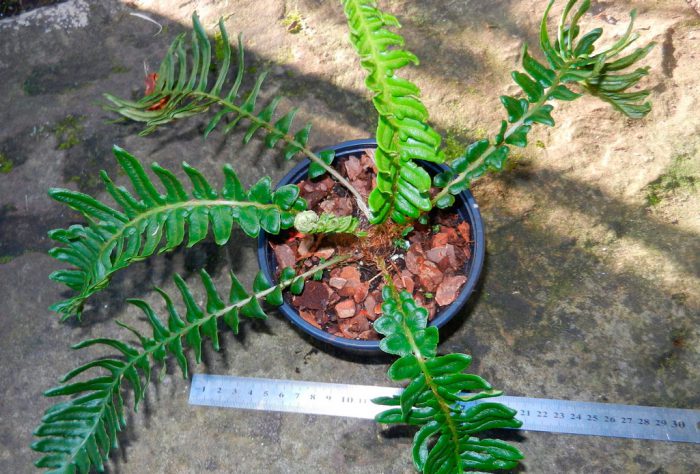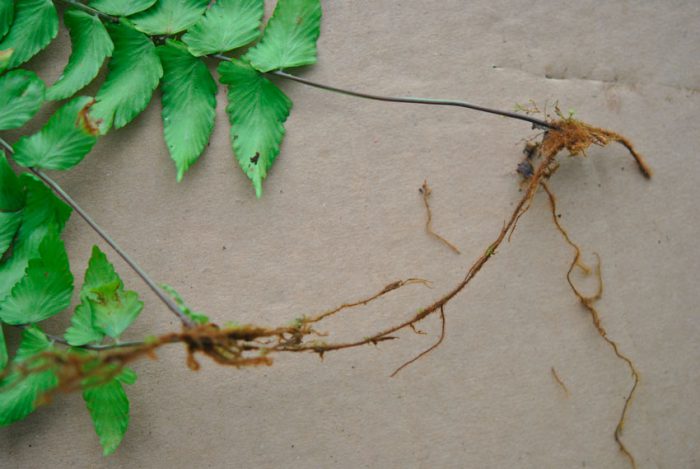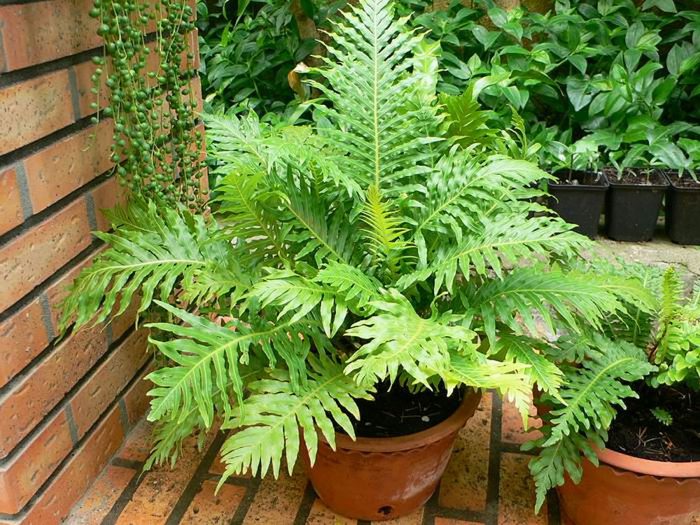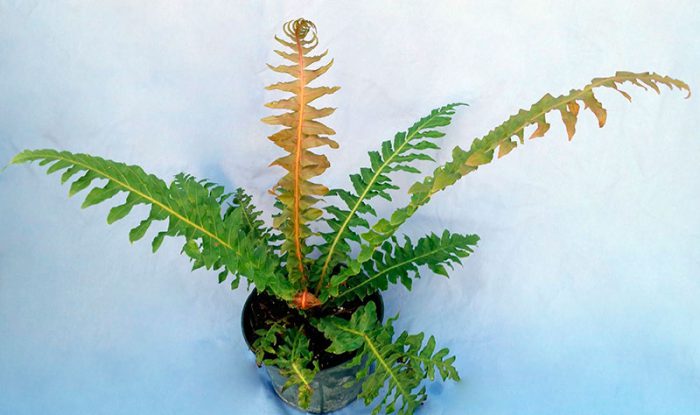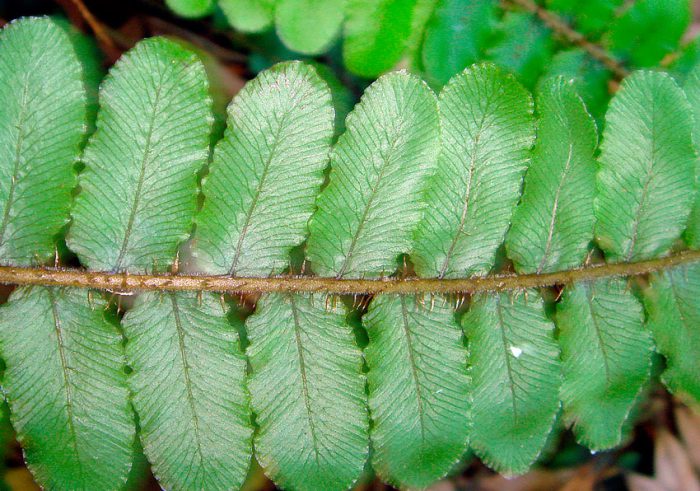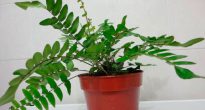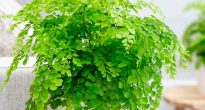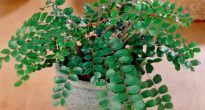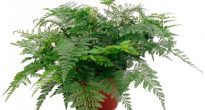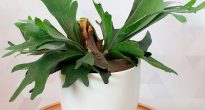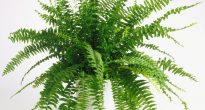Ferns like blehnum (Blechnum) is directly related to the family Blechnaceae. It unites about 200 species of plants that are highly decorative.
This genus stands out for its long (about 1 meter), leathery, palm-like leaves, which are also called fronds. These pale green leaves are collected in a rather dense rosette, located at the top of a lignified, shortened stem, which turns into a fairly powerful rhizome. In old rather large specimens, the trunk can reach half a meter in height, while this plant is very similar to a short palm tree.
The oval-elongated fern leaves are deeply cut and pinnately dissected. There are species in which the lobes, located along the central vein, are at a distance from each other that exceeds their width.
Long, narrow groups of spores (soruses) are arranged in pairs along the central veins on the seamy surface of each leaf lobe.
Blehnum fern care at home
This plant is quite difficult to grow at home, because it has a rather capricious character. In order for blehnum to grow and develop normally, several important rules of care should be followed.
Illumination
The plant needs partial shade or diffused lighting. Direct rays of the sun on foliage are contraindicated for such a fern, as they can leave burns. Therefore, it is best to place it on a north orientation window. If this is not possible, then the fern is placed away from windows.
Temperature regime
Loves warmth. In summer, it needs a moderate temperature regime from 20 to 25 degrees, and in winter - in coolness from 18 to 20 degrees. It should be remembered that the room should not be colder than 16 degrees, since the plant may die due to low temperatures.
It is also recommended to protect blehnum from drafts and from sudden temperature changes. In this regard, it is necessary to ventilate the room very carefully, avoiding the ingress of cold air masses on the plant.
How to water
The substrate in the pot should be slightly damp at all times (not soggy). Avoid stagnation of liquid in the soil. You need to water the fern after the top layer of the substrate dries slightly.To do this, use lukewarm, soft and necessarily well-settled water.
Humidity
The humidity in the room must be more than 60 percent. It will not be possible to increase the air humidity in the apartment to that level by simple spraying, especially during the heating season. The flower can be placed in the immediate vicinity of a home fountain or next to an open container filled with water. So, a spacious and well-lit bathroom will be the ideal place for Blehnum.
Earth mixture
A suitable dredge should be neutral or slightly acidic. To prepare an earthen mixture, it is necessary to combine humus, leaf and peat soil, coarse sand in a ratio of 1: 2: 1: 1. It is also recommended to add a small amount of chopped bark of coniferous trees to the soil mixture.
Also, a ready-made special soil mixture for ferns is perfect for planting.
Do not forget during planting about good drainage at the bottom of the pot, which will help protect the plant from liquid stagnation.
Fertilizer
Top dressing is carried out during the period of intensive growth 2 times a month. To do this, use a complex mineral fertilizer for ornamental deciduous plants, while taking ½ part of the dose recommended on the package. In winter, fertilizer should not be applied to the soil.
Transplant features
Such a plant is transplanted only if absolutely necessary, for example, when the root system becomes cramped in the pot. This procedure is recommended in the spring.
Pruning
This plant often has a distinct trunk, but it does not need pruning, so it does not branch.
Reproduction methods
When grown indoors, blehnum is best propagated by division. To do this, the overgrown specimen must be divided in half or into several parts, while each division must have several growth points. And the greater the number of such growth points, the faster and better the division takes root.
If you wish, you can collect spores from the seamy side of the foliage and sow them. For this, a mini greenhouse will come in handy.
Diseases and pests
Such a plant is highly resistant to pests. Most often, it gets sick as a result of violations of the rules of care.
So, the fern reacts negatively to low air humidity, heavy or inappropriate substrate, irrigation with inappropriate and cold water, intense lighting, to a violation of the temperature regime, and so on. In all these cases, the reaction of Blehnum is almost the same. The fronds change their color to yellow, spots form on their surface, and the leaf lobes curl at the same time.
Main types
Of the large number of species, only a few are cultivated in indoor conditions.
Blechnum humpbacked (Blechnum gibbum)
Originally from the humid regions of New Hebrides and New Caledonia. Leaves without petiole are colored deep green. The leaflets are dissected to the central vein. At the same time, the narrow belt-like lobes have a sharpness at the tip and a very wide, almost fused with each other, bases. This type is most popular with flower growers.
Blechnum brasiliense (Blechnum brasiliense)
This plant comes from Brazil. This fern has a distinct trunk, and there are also very wide leaf plates. The foliage of young specimens is olive-colored, and of older ones it is dark green.
Blechnum moorei
This type is of particular interest. This low-growing plant reaches a height of only 30 centimeters. The petioles of the leaves are long and thin and at the same time are painted in a dark, almost black color. Glossy leaves are dark green in color. The belt-like lobes of the leaves have the same width along the entire length and slightly wavy edges. As a rule, such lobes are sharply chopped off at the ends, but some of them have 2 clearly distinguishable "horns".Under natural conditions, such a fern can be found in some parts of Australia.
River Blechnum (Blechnum fluviatile)
The homeland of this species is New Zealand, as well as Australia. The wide-oval leaf lobes are rather short, and the crown has an almost spherical shape. The plant reaches a height of 40 centimeters, and a width of 30 centimeters.

